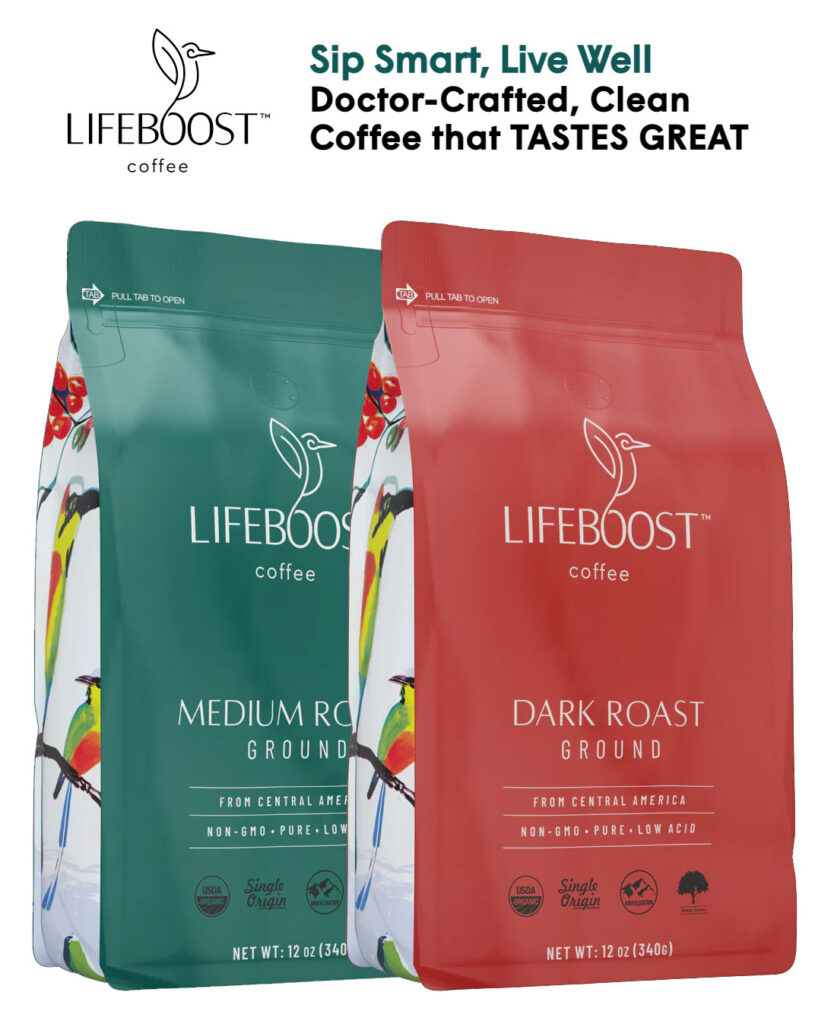In the heart of every bustling café, a tale of warmth and flavor unfolds—one that leads us to the enticing world of cappuccino. Originating from the delicate balance of coffee and milk, this beloved beverage tells a rich story that dates back centuries. Each cup brims with creamy froth, whispering secrets of its journey from sun-kissed beans to our eager hands. Here, sipping a cappuccino becomes not just an act of indulgence, but a moment of connection, inviting us to gather, share, and savor life’s little pleasures together.
The Alluring Origins of Cappuccino: A Journey Through Time
Imagine walking through the charming cobblestoned streets of Vienna in the early 1900s, where the irresistible aroma of freshly brewed coffee wafts through the air. This picturesque city laid the groundwork for a delightful beverage that would soon take the world by storm—the cappuccino.
The cappuccino traces its roots back to the Capuchin friars of the 17th century. These devoted monks, known for their brown robes, inspired the name of the beverage. The drink itself evolved from earlier coffee concoctions, initially consisting merely of coffee mixed with cream or milk.
As the popularity of coffee spread across Europe, Italians began refining the brew in the early 20th century. With the invention of the espresso machine, the cappuccino as we know it was born, characterized by its harmonious balance of strong espresso, velvety steamed milk, and frothy foam crown.
To summarize the captivating evolution of cappuccino:
- Origin: Inspired by Capuchin friars
- Evolution: From coffee and cream to espresso and milk
- Innovation: Introduction of the espresso machine
- Signature Elements: Bold espresso, creamy milk, airy foam
Each sip of cappuccino holds a story, a blend of culture and craftsmanship that speaks to our palate and history. The allure of this beloved drink carries on, inviting us to indulge in its rich legacy with every cup.
Crafting the Perfect Espresso: The Heart of a Cappuccino
Every great cappuccino begins with one crucial element: the espresso. Imagine entering a quaint café, the aroma of freshly ground coffee enveloping you. As you take a seat, you anticipate the warmth of a well-crafted cappuccino. But what makes this delightful drink truly special? It all lies in the art of brewing a perfect espresso.
To create a cappuccino that captivates your senses, follow these essential steps:
- Choose Quality Beans: Start with high-quality, freshly roasted coffee beans. The richness of your espresso directly influences the cappuccino’s flavor.
- Grind to Perfection: Aim for a fine, consistent grind. The right grind size ensures proper extraction during the brewing process.
- Master Your Technique: Use an espresso machine to brew the espresso. A 25-30 second extraction yields that rich, velvety shot, bursting with flavor.
- Temperature Control: Opt for water heated to about 200°F (93°C). Too hot or too cold will affect the espresso’s complexity.
- Timing is Everything: It’s important to pull the shot just right. Aiming for that ideal shot contributes to the signature taste of the cappuccino.
When executed perfectly, a smooth, concentrated espresso forms the foundation of your cappuccino, harmonizing beautifully with the frothed milk that follows. The robust flavors of the espresso balance with the creamy texture, creating a drink that warms both body and soul. As you enjoy every sip, you’ll appreciate how this heart of the cappuccino elevates your experience into something divine.
The Art of Steaming Milk: A Dance of Temperature and Texture
Imagine stepping into your favorite café, the enchanting smell of freshly brewed coffee enveloping you. The barista meticulously prepares each cappuccino, but it is the delicate dance of steaming milk that transforms a simple cup into an indulgent experience. This process is both an art and a science, requiring the perfect balance of temperature and texture.
Why Steaming Matters:
- A cappuccino traditionally boasts a rich layer of foam.
- Steam creates microfoam that enhances flavor while ensuring a velvety mouthfeel.
- Controlling the temperature is vital; too hot and you risk scalding the milk, too cool and the foaming process falters.
Steaming Process Steps:
- Choose the Right Milk: Whole milk offers a creamy texture while alternatives like oat or almond provide unique flavors.
- Begin Steaming: Submerge the steam wand just below the surface of the milk. This introduces air, creating those luscious bubbles.
- Monitor Temperature: Aim for around 150°F (65°C). Use a thermometer for precision or rely on feel if you’re experienced.
- Finish with a Swirl: After steaming, swirl the cup to integrate the milk and foam seamlessly.
In the world of cappuccino, mastering the art of steaming milk is crucial. It transforms ingredients into a delightful concoction, adding not just flavor but also emotional warmth. The next time you sip that cappuccino, remember, every frothy sip tells a larger story—a story of passion, precision, and creativity.
The Signature Cappuccino Layer: Froth, Foam, and Flavor
Imagine yourself in a quaint café, the rich aroma of freshly brewed coffee mingling with the soft chatter of patrons. Now, picture your perfect cappuccino—a masterpiece boasting layers of froth, foam, and flavor that entice your senses.
The secret lies in the cappuccino’s signature layers. The base starts with a bold espresso, like a solid foundation for a magnificent structure. On top, a velvety layer of steamed milk emerges. The magic truly happens with the frothy cap.
- Froth: This airy layer is created by expertly steamed milk, introducing lightness and elevating the entire drink.
- Foam: This is the sweet, creamy finish—a playful texture that makes each sip evoke joyous delight.
- Flavor: The gentle sweetness from the milk harmonizes beautifully with the robust espresso, offering a full-bodied experience.
To illustrate the difference, let’s consider the texture and impact of these layers in a quick comparison:
| Layer Type | Texture | Flavor Impact |
|---|---|---|
| Froth | Light and airy | Adds a subtle sweetness |
| Foam | Creamy and thick | Lingers on the palate |
| Espresso | Bold and rich | Foundation of the cappuccino’s flavor |
In essence, the fusion of froth, foam, and flavor transforms a simple cappuccino into an enchanting experience, drawing you back for another sip. Revel in the layers, and let each cup take you on a delightful adventure.
Exploring Variations: From Classic to Creative
Cappuccino, with its rich history and iconic status, offers a delightful canvas for creativity. As we dive into the world of variations, we discover how this beloved drink transcends its classic roots to invite innovation and personalization.
Classic Cappuccino: Traditionally made with equal parts espresso, steamed milk, and velvety milk foam, the classic cappuccino is a staple. Its simplicity allows the coffee’s flavor to shine, supported by the creamy texture of milk.
Creative Variations:
- Flavored Cappuccinos: Add a splash of vanilla, hazelnut, or caramel syrup to elevate the experience. These flavors complement the robustness of the espresso beautifully.
- Matcha Cappuccino: For the health-conscious, blending matcha powder with steamed milk creates a vibrant green cappuccino rich in antioxidants.
- Spiced Cappuccino: Dust with cinnamon or nutmeg to introduce warm, aromatic hints that transform the coffee moment into a cozy ritual.
Comparison Table: Classic vs. Creative Cappuccinos
| Variation | Ingredients | Flavor Profile |
|---|---|---|
| Classic Cappuccino | Espresso, steamed milk, milk foam | Rich, creamy coffee |
| Flavored Cappuccino | Espresso, steamed milk, flavored syrup | Sweet, aromatic |
| Matcha Cappuccino | Matcha powder, steamed milk | Earthy, slightly sweet |
| Spiced Cappuccino | Espresso, steamed milk, spices | Warm, comforting |
Ultimately, the art of cappuccino lies in its adaptability. By experimenting with flavors and textures, every sip tells a new story. Make your cappuccino experience truly yours—whether you stay classic or venture into the creative realm.
Pairing Perfection: What Goes Best with Your Cappuccino?
Picture this: you cradle a warm cappuccino in your hands, the inviting aroma wafting up to greet you. But what’s a great cappuccino without the perfect accompaniment? The beauty of this heavenly drink lies not only in its velvety layers of espresso and frothed milk but also in the delightful pairings that elevate the entire experience.
Sweet Treats to Complement Your Cappuccino:
- Croissants: Flaky and buttery, the crisp layers of a croissant contrast beautifully with the creamy texture of a cappuccino.
- Chocolate Biscotti: This crunchy treat adds a sweet dimension, each bite inviting you back to take another sip of your rich cappuccino.
- Tiramisu: Infused with espresso, this classic dessert mirrors your drink, creating a harmonious dance of flavors.
Savory Options Worth Exploring:
- Avocado Toast: A sprinkle of sea salt and lemon pumps up the flavors, enhancing the nuttiness of your cappuccino.
- Cheese Platter: The richness of brie or sharpness of aged cheddar pairs wonderfully, balancing the frothy goodness.
In conclusion, every sip of your finely crafted cappuccino deserves a companion that complements its complexity. Whether you choose sweet or savory, these perfect pairings turn a simple coffee break into an extraordinary experience. So, next time you indulge in a cappuccino, consider the delightful pairings that await.
The Cappuccino Experience: More Than Just a Drink
A cappuccino is not merely a beverage; it is an enchanting ritual, an experience that transcends beyond the liquid in your cup. Imagine walking into a cozy café, the rich aroma of freshly brewed espresso wrapping around you like a warm blanket. As you sit and sip that perfect cappuccino, your senses awaken to a symphony of flavors.
Why does the cappuccino hold such a cherished place in our hearts?
- Emotional Connection: For many, a cappuccino is often tied to memorable moments. Perhaps it was the first sip shared with a friend or a quiet morning solitude. Each cup tells a story.
- A Social Catalyst: This beloved drink fosters connections. Meeting friends for a cappuccino or asking a colleague to grab one can spark conversations and build bonds. It’s often the backdrop of laughter, ideas, and friendships.
- Cultural Significance: In cities like Rome or Milan, the cappuccino has become a staple, a ritual that reflects the local lifestyle. How we enjoy it varies—from standing at a bar to lounging in an outdoor café.
As you savor your cappuccino, you aren’t just indulging in a drink; you are stepping into a collective experience that binds people through culture, taste, and cherished moments. So next time you enjoy your cappuccino, remember it’s about more than the flavors—it’s about connection, warmth, and celebration.
Cultural Significance: How Cappuccino Shapes Social Interactions
In the bustling cafes of Italy, the cappuccino holds a place not just as a beloved beverage but as a cultural cornerstone. Imagine stepping into a sun-drenched piazza, where the aroma of rich espresso mingles with the sounds of laughter and conversation. Here, the cappuccino becomes more than a drink; it transforms into a social ritual.
- Gathering Spot: Friends, families, and even strangers converge over a warm cappuccino. Sharing stories and laughter over steaming cups fosters bonds that often last a lifetime.
- Symbol of Hospitality: Offering a cappuccino to guests becomes a gesture of warmth and welcome, enhancing social ties and nurturing relationships.
In contrast, other coffee drinks, like the espresso or americano, lack the frothy allure of a cappuccino. While they serve their purpose of caffeine delivery, they do not encapsulate the spirit of conversation and connection in quite the same way.
Comparative Elements of Coffee Drinks:
| Coffee Type | Social Interaction | Texture | Cultural Significance |
|---|---|---|---|
| Espresso | Quick interactions | Thick | Often consumed alone |
| Americano | Casual drink | Fluid | More of a work drink |
| Cappuccino | Strong connections | Creamy | Central to socializing |
Ultimately, the cappuccino isn’t just about the coffee; it’s about the stories brewed over each cup, reminding us that the best moments in life are often shared companionably, one sip at a time.
From Bean to Cup: The Journey of Coffee
Imagine waking up on a crisp morning, the sun peeking through the window as you dream of warmth. The first thought that dances through your mind is the allure of a perfectly crafted cappuccino. But have you ever paused to consider the remarkable journey of coffee from bean to cup? This tale weaves together a rich tapestry of history, nature, and craftsmanship.
- The Coffee Bean: Initially, the journey begins in lush coffee plantations, where dedicated farmers handpick ripe red cherries. These cherries envelop the prized beans, which offer the foundation for the beloved cappuccino.
- Processing: Once harvested, the cherries undergo processing. There are two primary methods: washed and natural. The washed method enhances the bright flavors, while the natural method adds a fruity sweetness. Choosing the right process affects the final cappuccino’s taste profile.
- Roasting: Next, the beans embark on their roasting adventure. Here, expert roasters transform the raw green beans into aromatic coffee. The roasting level—light, medium, or dark—greatly influences the flavor of your cappuccino.
- Grinding: After roasting, the beans are ground to a specific coarseness, tailored for espresso extraction. This step is crucial, for it sets the stage for rich crema in your cappuccino.
- Brewing: Finally, hot water rushes through the ground coffee, producing a robust espresso shot. With steamed milk and foam added, you now hold in your hands a cup that is not merely a drink but an experience—crafted through time, effort, and tradition.
As you sip your cappuccino, remember the journey of those tiny beans, each carrying stories of distant lands and skilled artisans.
Tips for Making a Café-Worthy Cappuccino at Home
Imagining the warm embrace of a café as you take a sip of your freshly made cappuccino can be enticing. However, recreating that experience at home requires a bit of finesse. Let’s uncover the secrets to crafting that perfect cappuccino right in your kitchen.
1. Choose Quality Beans:
- Start with freshly roasted coffee beans. Look for espresso roast beans that suit your taste.
2. Master the Espresso:
- Use a good espresso machine. Aim for 18-20 grams of coffee, and ensure your grind is fine but not powdery. An ideal extraction time is around 25-30 seconds.
3. Steaming Milk:
- Heat your milk to about 150°F (65°C). A thermometer is your best friend here. Use a steam wand to create a silky microfoam, which is essential for that signature texture of a cappuccino.
4. Layering is Key:
- Pour the steamed milk over the espresso, allowing the creamy texture to dance atop the rich coffee. Finish with a dollop of velvety froth on top.
5. Experiment with Ratio:
- A classic cappuccino consists of equal parts espresso, steamed milk, and froth. Adjust these proportions until you find your perfect balance.
By following these tips, you’ll transform your morning routine into an aromatic celebration, one cappuccino at a time! With a little practice, you’ll sip away like a true barista.
Why We Love Cappuccino: The Emotional Connection to Coffee
Imagine walking into a cozy café, the aroma of freshly brewed coffee wafting through the air, instantly invoking a sense of comfort. For many, the cappuccino represents more than just a drink; it symbolizes warmth, tranquility, and connection.
Why do we feel so deeply about our cappuccinos? Here are a few emotional ties we share:
- Nostalgia: A warm cup of cappuccino often takes us back to cherished memories—perhaps mornings spent with loved ones or quiet afternoons of introspection.
- Ritual: The daily ritual of savoring a cappuccino gives us a moment of pause in our busy lives. We almost crave that experience of watching the barista pour a perfect layer of frothy milk, accentuating the bold espresso beneath.
- Social Connection: Cappuccinos create bonds. Whether catching up with a friend or meeting a new acquaintance, sharing a cappuccino transforms an ordinary moment into something meaningful.
- Comfort: On chilly mornings or rainy afternoons, a cappuccino offers solace. Each sip envelops you in warmth, wrapping you in a comforting embrace.
In essence, the connection to cappuccino goes beyond taste; it intertwines with our emotions and memories, forming an enduring relationship that many cherish dearly. We don’t just drink cappuccino—we feel it.
Frequently Asked Questions
What ingredients are used to make a cappuccino?
A classic cappuccino is an exquisite blend of three primary ingredients: rich espresso, creamy steamed milk, and frothy milk foam. The espresso, bold and aromatic, is the heart of the drink, providing a deep and robust flavor that resonates with coffee lovers. The steamed milk adds a luxurious creaminess, while the milk foam creates a light texture on top, often sculpted into artful designs. This trio works harmoniously to create a comforting indulgence, ideal for savoring at any time of the day.
How is cappuccino different from latte?
Though a cappuccino and a latte may seem similar, they are differentiated by the balance of ingredients and their unique textures. The cappuccino boasts a harmonious proportion of one-third espresso, one-third steamed milk, and one-third milk foam, leading to a delightful thickness and frothy finish. In contrast, a latte contains a higher ratio of steamed milk, typically yielding a creamier drink with a smoother texture and a subtle coffee flavor. Choosing between the two depends on whether one craves a frothy extravagance or a silky blanket of milk.
What is the history of cappuccino?
The origins of cappuccino trace back to the 17th century in Europe, where it blossomed in Austrian coffee houses. Named after the Capuchin friars, whose dark brown robes resembled the drink’s color when mixed with cream, cappuccino evolved from the Viennese ‘Kapuziner.’ As coffee culture spread throughout Italy in the early 20th century, the cappuccino embraced espresso and steamed milk, capturing the hearts of coffee enthusiasts and eventually permeating cafes worldwide, becoming the beloved staple it is today.
Is cappuccino typically served hot or cold?
Traditionally, cappuccino is celebrated as a hot beverage, designed to wrap the drinker in warmth and comfort. The steaming hot espresso coupled with frothy milk creates an inviting experience, perfect for savoring during chilly mornings or leisurely afternoons. However, with the rise of modern coffee trends, cold versions of cappuccinos, often iced or blended, have emerged as refreshing alternatives for those seeking a chill on warmer days, proving that the charm of cappuccino can adapt to various preferences.
Can I customize my cappuccino?
Absolutely, customizing your cappuccino can turn your coffee moment into a personal indulgence! You can experiment with various milk types, such as oat, almond, or soy, catering to dietary preferences or flavor desires. Syrups like vanilla or caramel can add a sweet note, while spices such as cinnamon or nutmeg can provide a warm spice. Whether you prefer a stronger coffee flavor, a sweeter twist, or even an extra swirl of whipped cream, the possibilities are as limitless as your imagination!





